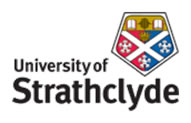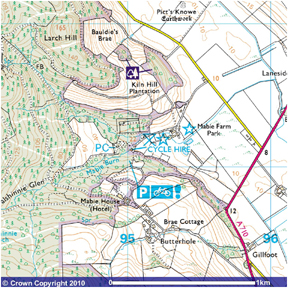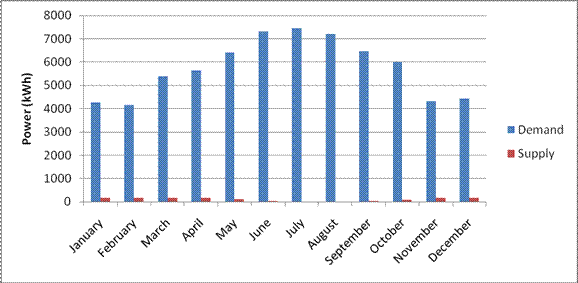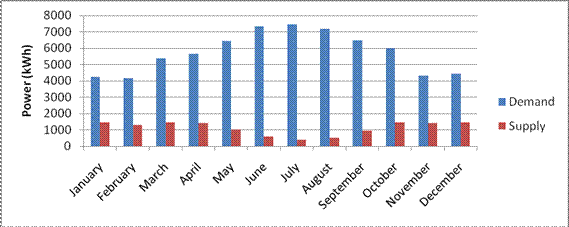

- General Considerations
- Specific Considerations

Mabie Farm Park - Hydro
The values for the flow rate of the Mabie Farm Park stream were calculated by the Low Flows 2000 Software tool.
From the OS map, shown in Figure 1, the difference in altitude of the stream as it passes Mabie Farm Park is 5 m.
Figure 1. OS map, Mabie Farm Park, Dumfries
Source: Ordinance Survey
Considering that the annual Q95 flow (Environmental flow) has to be left in the stream, and by assuming a design flow for the turbine of the annual Q90 value (0.01 m3/s), the power to be produced is shown in the following table.
Table 1. Power available to be produced in Mabie Farm
Q90 flow
(m3/s)Environmental
flow (m3/s)Available flow
(m3/s)Flow for power
generation
(m3/s)Possible
Power Output
(W)Power production
per month
(kWh)Jan
0.031
0.007
0.024
0.01
245
182
Feb
0.024
0.007
0.017
0.01
245
165
Mar
0.025
0.007
0.018
0.01
245
182
Apr
0.023
0.007
0.016
0.01
245
177
May
0.013
0.007
0.006
0.006
147
109
Jun
0.008
0.007
0.001
0.001
25
18
Jul
0.005
0.007
0
0
0
0
Aug
0.005
0.007
0
0
0
0
Sep
0.008
0.007
0.001
0.001
25
18
Oct
0.012
0.007
0.005
0.005
123
91
Nov
0.021
0.007
0.014
0.01
245
177
Dec
0.026
0.007
0.019
0.01
245
182
By comparing the supply and demand, it can be seen that the supply will represent 0.67% of the demand. The difference can be seen in the following graph:
Graph 1. Comparing Demand and Supply from Hydro in Mabie Farm
By considering monthly average flows and the annual average flow (0.086 m3/s) as the design flow, the results will be the following:
Table 2. Power available to be produced in Mabie Farm at Design Flow
Average flow
(m3/s)Environmental
flow (m3/s)Available flow
(m3/s)Flow for power
generation
(m3/s)Possible
Power Output
(W)Power production
per month
(kWh)Jan
0.140
0.007
0.133
0.086
2109
1569
Feb
0.120
0.007
0.113
0.086
2109
1417
Mar
0.110
0.007
0.103
0.086
2109
1569
Apr
0.086
0.007
0.079
0.079
1937
1395
May
0.062
0.007
0.055
0.055
1349
1004
Jun
0.040
0.007
0.033
0.033
809
583
Jul
0.029
0.007
0.022
0.022
540
401
Aug
0.036
0.007
0.029
0.029
711
529
Sep
0.060
0.007
0.053
0.053
1300
936
Oct
0.100
0.007
0.093
0.086
2109
1569
Nov
0.120
0.007
0.113
0.086
2109
1519
Dec
0.130
0.007
0.123
0.086
2109
1569
In this case, the power production will represent an improvement, by increasing the supply and demand match as shown on the following graph.
Graph 2. Comparing Demand and Supply from Hydro at Design Flow
- This energy demand/supply profile - although more convenient - illustrates the high variability that may be found in energy production.
- Because these variations are large, it is recommended to be conservative in the prediction, recommending to consider the first case (design flow of 0.01 m3/s).
- Projecting the use of a turbine with this design flow will represent a rated power of 245 W – the equivalent of 3.5 fluorescent tubes – making it not feasible.
For achieving a better energy yield, a higher head or flow will be needed. For this, a reservoir or dam will be convenient in areas over the estate, in this case Mabie forest which is part of the forestry commission of Scotland.In the case of installing a hydro system in this location (same head), the required flows will be:
Table 3. Flow Required to Meet Total Demand
Required flow(m3/s)
January
0.233
February
0.253
March
0.295
April
0.319
May
0.352
June
0.415
July
0.408
August
0.395
September
0.366
October
0.328
November
0.245
December
0.243
This illustrates that the highest flow required will be during the summer when naturally the flow rates are lower.
| MSc: Renewable Energy Systems and the Environment | © University of Strathclyde 2010 |


